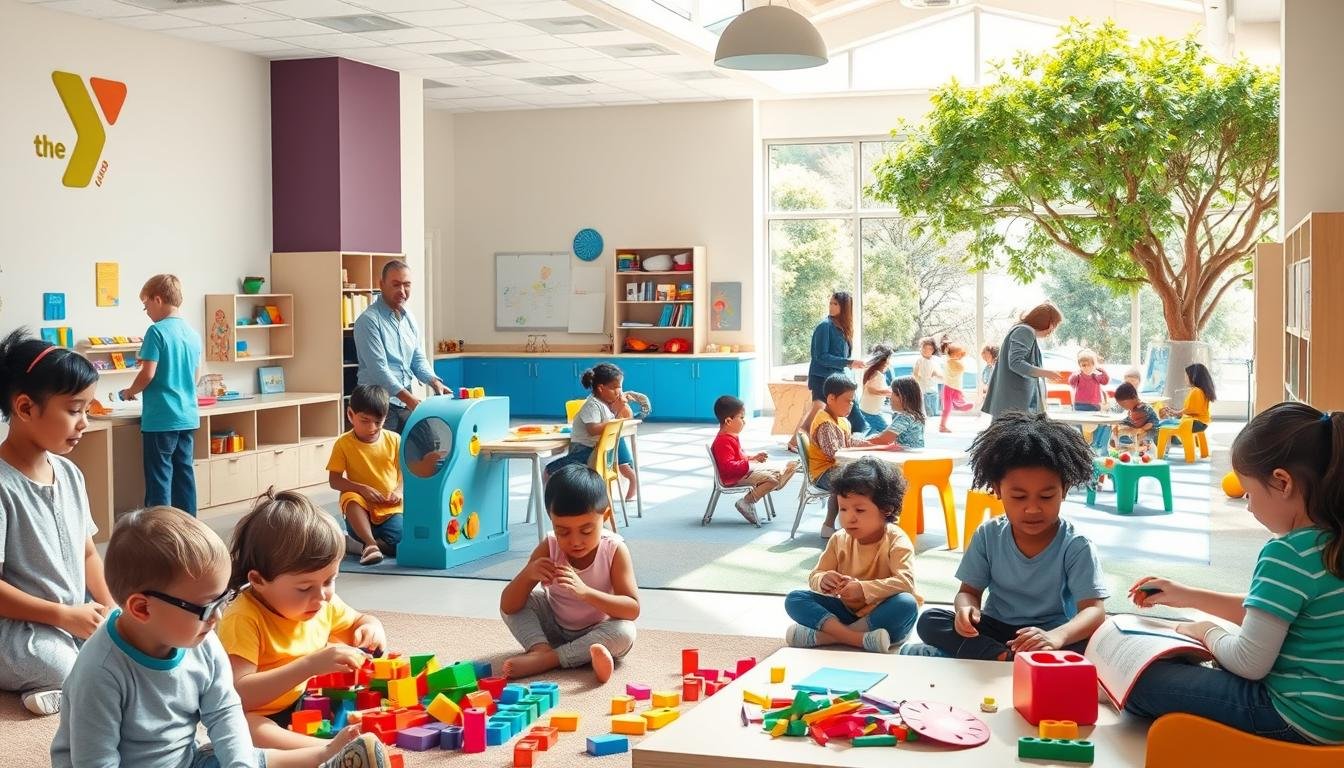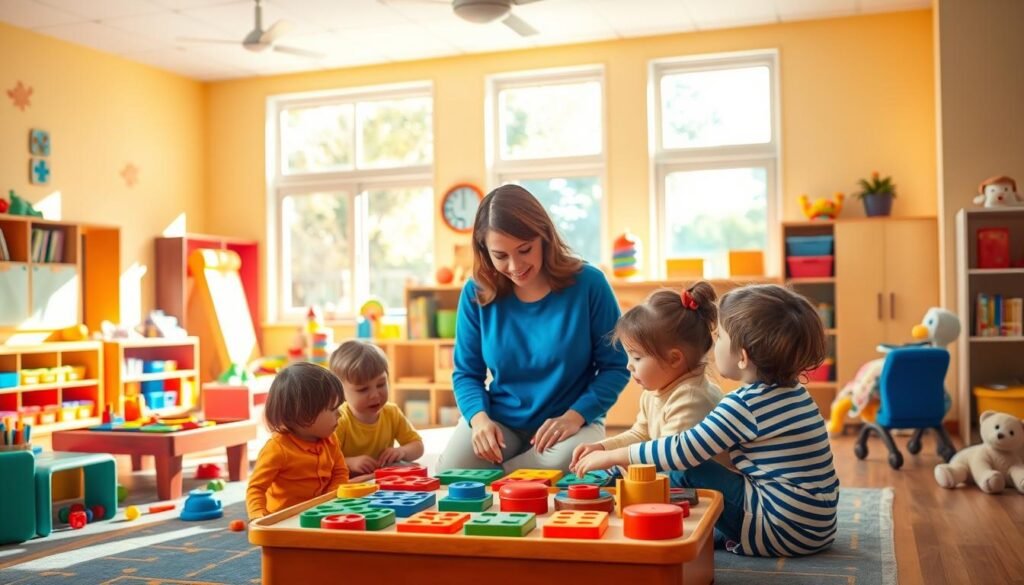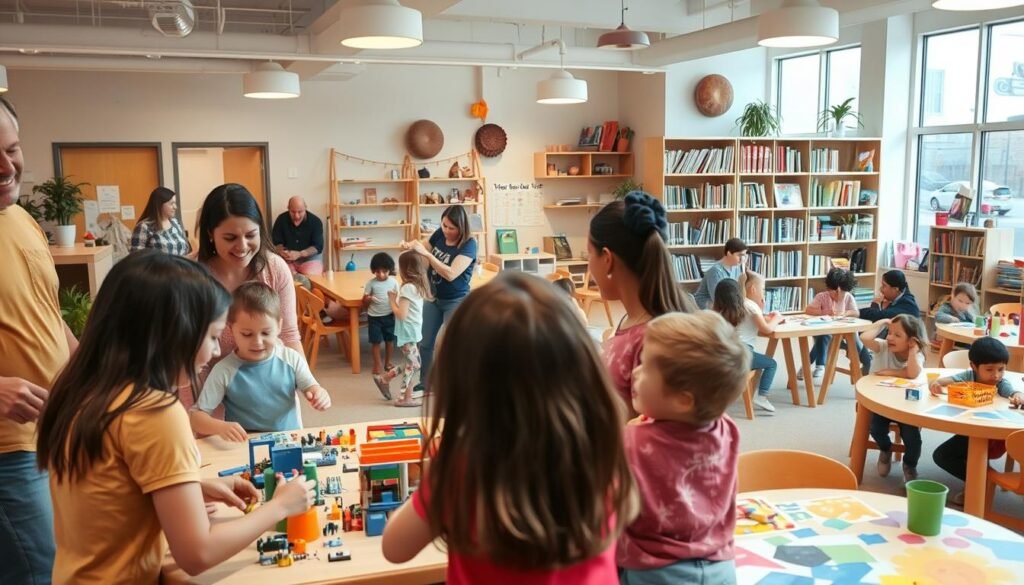
When I first started searching for childcare options, I felt overwhelmed. Like many parents, I wanted a place where my little one could grow, learn, and feel safe. That’s when I discovered programs at a well-known community organization focused on whole-child development.
Their approach uses the Creative Curriculum, blending play with skill-building activities. I immediately noticed how this method helps children explore their interests while hitting key developmental milestones. Each center maintains state licensing standards – a non-negotiable for me as a parent.
Registration requires basic documents like immunization records and emergency contacts. What stood out was their transparent process. They clearly outline both member and non-member rates upfront, helping families budget effectively.
What truly won me over? The emphasis on family partnerships. Staff regularly share updates about my child’s progress and suggest ways we can reinforce learning at home. It feels like we’re working together to nurture their growth.
Key Takeaways
- Educational programs focus on creative learning and developmental milestones
- All locations meet strict state licensing requirements for safety
- Registration requires medical records and contact information
- Pricing options available for both members and non-members
- Family involvement is encouraged through regular progress updates
Overview of YMCA Daycare Programs
What surprised me most about these childcare services was their thoughtful approach to different age groups. From cuddly infants to curious preschoolers, each program adapts to meet kids where they are developmentally.
Nurturing Youngest Learners
The infant care program focuses on creating a safe environment for sensory exploration. Caregivers use gentle interactions to build trust while introducing basic concepts like colors through play. For toddlers, activities shift toward developing motor skills and early language abilities.
Learning Through Experience
Older children engage in projects blending art with science experiments – like mixing safe kitchen ingredients to create “volcanoes.” These hands-on sessions teach problem-solving while keeping things fun. I appreciate how they balance structured lessons with free playtime.
Social growth happens naturally during group activities. My child learned sharing through collaborative art murals and gained confidence during weekly music circles. Staff call these moments “building blocks for school readiness” – skills that help kids transition smoothly to classroom settings.
Parents receive monthly calendars showing skill focuses, from letter recognition to emotional intelligence exercises. This transparency lets us reinforce learning at home through simple games or conversations about feelings.
how much is ymca daycare? Pricing Details

Understanding pricing structures became easier when I saw their age-based tiers. Care programs for infants (6 weeks-12 months) cost more than toddler care (12-24 months) due to staffing ratios. Here’s what I discovered during my research:
| Age Group | Member Rate | Non-Member Rate | Notes |
|---|---|---|---|
| Infant Care | $215/week | $265/week | Includes sensory activities |
| Toddler Care | $185/week | $235/week | Covers skill-building projects |
| *$75 one-time registration fee applies to all programs | |||
Membership makes a noticeable difference – about $50 weekly savings across age groups. As one staff member told me, “Our pricing reflects our commitment to accessible quality care.” This transparency helped me compare options without hidden surprises.
Activity fees are baked into weekly rates, covering art supplies and outdoor equipment. I appreciate not getting nickel-and-dimed for every special project. For busy families, full-day programs include meals and nap time supervision.
“We adjust rates annually based on operational costs, but always notify families six months in advance.”
Seeing these numbers upfront let me budget effectively. While costs vary by location, this breakdown gave me realistic expectations. The clear value proposition – skilled staff and developmental resources – justifies the investment in my child’s growth.
Financial Assistance and Membership Options
Navigating childcare costs felt daunting until I discovered flexible support systems. The Wichita Falls location uses a sliding fee scale that considers income, household size, and essential expenses. This approach ensures families pay what they can reasonably afford while maintaining program quality.
| Annual Income | Family Size | Adjusted Weekly Rate |
|---|---|---|
| $30,000 | 3 | $120 |
| $45,000 | 4 | $160 |
| $60,000 | 5 | $200 |
| *Rates include member discounts; non-members add 15% | ||
Submitting recent pay stubs and tax forms streamlined my application. Staff helped me understand how membership cuts costs long-term – members save an extra 10-15% beyond standard discounts. “Our goal is accessibility,” one coordinator shared. “No family gets turned away for financial reasons.”
Every six months, parents provide updated documents to keep assistance current. This process taught me to track earnings more carefully – a valuable responsibility lesson that benefits our household budgeting.
Local businesses and charities partner with the program to fund holiday care packages and summer youth initiatives. During winter breaks, they even offer free extended hours for working parents. These community efforts make quality care feel achievable, not exclusive.
Registration Process and Parent Handbook

Getting my little one enrolled felt surprisingly straightforward. The team walked me through each phase with patience, turning what I feared would be paperwork chaos into a smooth experience.
Starting the process required three simple steps: completing an online form, uploading documents, and scheduling an orientation. Required files included immunization records, emergency contacts, and health insurance details. I appreciated the clear checklist that prevented last-minute scrambles.
The parent handbook became my go-to resource. It outlines everything from daily schedules to illness policies. One line stuck with me: “Consistent routines help children thrive.” This philosophy shines through their structured yet flexible approach to care.
Staff highlighted three key benefits of their registration system:
- Real-time updates on application status
- Secure digital document storage
- 24/7 access to program guidelines
Having everything organized upfront minimized surprises later. When I had questions about snack policies, the handbook’s nutrition section provided answers instantly. This attention to detail made me confident in their quality standards.
Through the process, I realized how their systems support family needs. The handbook even includes tips for creating similar routines at home. It’s more than rules – it’s a roadmap for partnering in my child’s growth.
Quality Child Development and Learning Environment

Seeing my little one stack blocks while naming colors taught me what true quality care looks like. The program’s foundation in the Creative Curriculum creates intentional learning moments disguised as play. Every activity aligns with Texas Early Learning Guidelines, ensuring kids build skills for school success.
Teachers weave developmental magic into daily routines. Storytime becomes letter recognition practice, snack time turns into counting exercises. I’ve watched children master sharing through group art projects and problem-solving during water play stations. These sensory-rich experiences spark curiosity while building coordination.
The space feels like a second home – cozy reading nooks, familiar daily rhythms, and caring staff who remember each child’s favorite dinosaur. This stability lets kids explore confidently. My favorite wall display charts growth milestones, showing how the program nurtures both academic readiness and emotional intelligence.
Values like kindness and responsibility get woven into activities naturally. During cleanup time, teachers cheer, “Teamwork makes our space beautiful!” It’s more than childcare – it’s character-building disguised as fun.
Building Community and Family Involvement

The moment I realized my child was learning kindness through community projects changed my perspective on childcare. Their programs go beyond basic care, creating spaces where families grow together while nurturing core values like respect and responsibility.
Monthly harvest festivals and charity drives became our favorite family activities. These events teach kids empathy through action – like packing meals for local shelters. One coordinator shared, “We don’t just host events – we build connections that strengthen neighborhoods.”
Open registration for seasonal celebrations ensures everyone can join. Last winter’s multicultural fair let children explore traditions through crafts and stories. What surprised me? How these gatherings helped my little one practice sharing and teamwork naturally.
Parents receive weekly emails suggesting home discussions about community roles. We reinforce social skills by asking questions like, “How did helping others make you feel today?” This bridges classroom lessons with real-world character development.
The true magic happens in small moments. Watching kids collaborate on mural projects or cheer each other during talent shows reveals how quality programs shape confident, caring individuals. These experiences create belonging – for children and parents alike.
Conclusion
Watching my child thrive in this program solidified my choice. The blend of clear financial assistance options and straightforward registration removed barriers many families face. I found the parent handbook especially helpful – its guidelines turned uncertainty into confidence.
Through creative projects and group activities, my little one built essential social skills while preparing for school environments. What started as childcare became a community experience shaping character through shared responsibilities. Weekly teamwork exercises taught values like accountability in ways that stick.
The true win? Seeing how quality care extends beyond classroom walls. Meal prep lessons became home cooking adventures. Neighborhood cleanups turned into family bonding moments. These connections foster growth that lasts into adulthood.
This journey taught me that investing in early development plants seeds for lifelong success. When responsibility meets opportunity, children don’t just learn – they flourish.

Leave a Reply